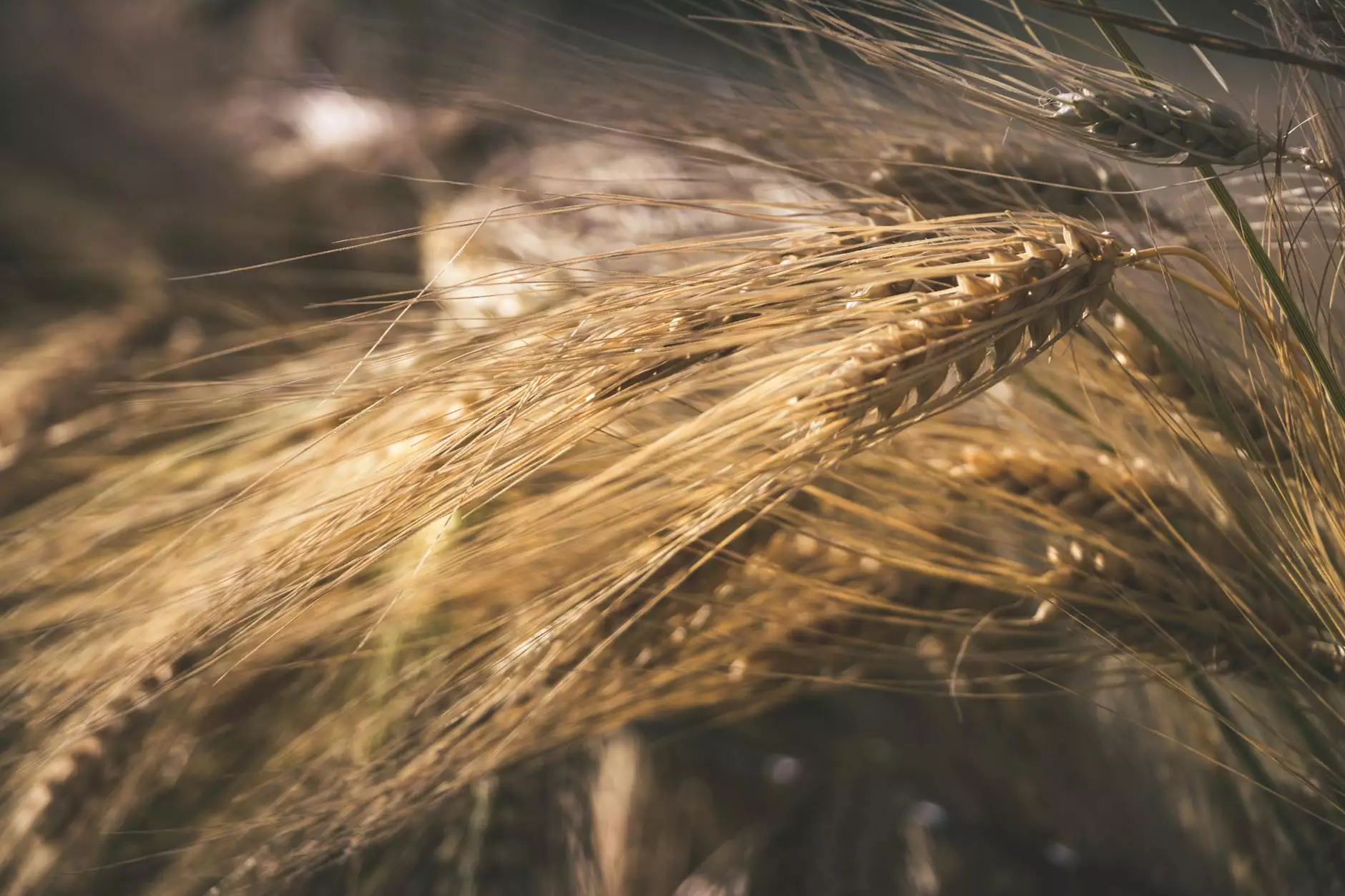Comprehensive Guide to Wheat Care for Optimal Farming Success

Wheat remains one of the most vital staple crops worldwide, feeding billions and supporting economies from small-scale farms to large industrial agriculture. Successful wheat cultivation hinges on meticulous wheat care strategies that encompass everything from soil preparation to harvest. Implementing these best practices not only enhances crop yield but also promotes sustainable farming, reduces environmental impact, and maximizes profitability.
Understanding the Importance of Proper Wheat Care
Effective wheat care is the foundation of a thriving crop. It involves a comprehensive approach that integrates:
- Soil health and fertility management
- Selection of appropriate seed varieties
- Timely planting and irrigation
- Protection against pests and diseases
- Optimal use of farm equipment and machinery
- Post-harvest handling and storage
Each aspect plays a critical role in ensuring that wheat plants have the right conditions to grow robustly and produce high-quality grain. The focus on wheat care also aligns with sustainable agriculture practices, conserving resources, and minimizing environmental footprint.
Soil Management for Healthy Wheat Care
1. Soil Testing and Fertility Enhancement
Before planting wheat, conducting thorough soil testing is essential. This process determines nutrient levels, pH balance, organic matter content, and soil texture. Based on test results, farmers can customize fertilization plans that supply essential nutrients such as nitrogen, phosphorus, and potassium. Proper fertilization enhances soil fertility, promoting vigorous wheat growth.
2. Soil Preparation and Tillage
Effective soil preparation involves deep tillage to break up compaction, improve aeration, and facilitate root penetration. Incorporating organic matter like compost or cover crops further boosts soil health. Proper tillage techniques also help integrate fertilizers thoroughly, reducing nutrient runoff and ensuring even nutrient distribution.
3. pH Balance and Lime Application
Wheat thrives in soils with pH levels between 6.0 and 7.0. Adjusting soil pH by applying lime or sulfur corrects acidity or alkalinity, optimizing nutrient availability. Regular pH monitoring is vital for consistent wheat care.
Seed Selection and Planting Techniques
1. Choosing the Right Wheat Varieties
Selection of high-yield, disease-resistant, and climate-adapted wheat varieties is crucial. Varieties with strong genetics for pest and disease resistance, drought tolerance, and grain quality ensure robust wheat care and superior yields.
2. Sowing Best Practices
Optimal plant density, planting depth, and seed spacing prevent overcrowding and promote healthy root development. Using precision seeders enhances uniformity and ensures timely germination, which is essential for maintaining a consistent growth cycle.
3. Germination and Early Growth Management
Maintaining appropriate soil moisture levels during germination encourages uniform sprouting. Early weed control and pest management are also integral to wheat care in this critical stage.
Water Management and Irrigation Strategies
1. Efficient Irrigation Techniques
Consistent and adequate watering during key growth phases—such as tillering, jointing, and booting—maximizes nutrient uptake and plant development. Drip irrigation and sprinkler systems provide precise water delivery, reducing waste and promoting uniform growth.
2. Monitoring Soil Moisture
Using soil moisture sensors or tensiometers helps determine optimal irrigation timing, preventing both water stress and excess moisture—conditions that can lead to disease or poor yields.
Pest and Disease Management in Wheat Care
1. Integrated Pest Management (IPM)
Employing IPM strategies, including crop rotation, resistant varieties, biological controls, and judicious chemical use, effectively minimizes pest and disease outbreaks. Regular scouting and early intervention are critical components of sound wheat care.
2. Disease Prevention and Control
Common wheat diseases such as rusts, blights, and fusarium head blight require proactive measures. Applying fungicides at the right time, maintaining field sanitation, and crop rotation are essential for disease management.
Farm Equipment and Machinery’s Role in Wheat Care
1. Maintenance of Farm Equipment
Proper maintenance of planting, fertilizing, irrigation, and harvesting machinery ensures efficiency and reduces crop damage. Regular inspection, lubrication, and calibration prevent breakdowns and guarantee precise operations.
2. Use of Technology for Precision Agriculture
Modern precision agriculture tools—including GPS-guided tractors, drones, and sensor-based systems—enhance wheat care. These technologies enable targeted interventions, precise application of inputs, and real-time monitoring of crop health.
Harvesting and Post-Harvest Management
1. Optimal Harvest Timing
Monitoring grain moisture levels to harvest at the ideal time ensures high-quality wheat with minimal losses. Harvesting too early or late can impact yield and grain quality.
2. Post-Harvest Handling
Proper drying, cleaning, and storage are crucial to preventing pests, mold, and spoilage. Using silos with controlled atmospheres maintains grain quality and preserves profitability.
Environmental Sustainability and Wheat Care
Sustainable wheat care practices are increasingly vital in modern agriculture. Techniques such as crop rotation, cover cropping, reduced tillage, and integrated pest management promote soil health, conserve water, lower chemical inputs, and support biodiversity. These practices lead to resilient farming systems capable of adapting to climate change and environmental stresses.
Partnering with Experts and Reliable Equipment Providers
Our business, TSGC Inc., specializes in providing top-tier farm equipment repair and farming equipment solutions tailored for wheat growers. Our Expertise ensures your machinery operates at peak efficiency, reducing downtime and optimizing wheat care. Partnering with professionals and using quality equipment is essential for achieving consistent and high-quality yields.
Conclusion: The Path to Successful Wheat Care
Achieving excellence in wheat care demands an integrated approach that combines scientific knowledge, technological adoption, and sustainable practices. From soil management and seed selection to pest control and equipment maintenance, each component plays a vital role in supporting healthy crop growth, maximizing yields, and ensuring environmental stewardship.
By investing in proper wheat care strategies and partnering with reputable providers like TSGC Inc., farmers can secure a profitable, sustainable future in wheat production. Remember, diligent attention to detail at each stage of the cultivation process transforms ordinary fields into productive and resilient wheat farms.
Contact Us for Expert Wheat Farming Equipment Solutions
If you're looking to enhance your wheat care practices with top-quality farm equipment repair or farming equipment, TSGC Inc. is your trusted partner. Our team is dedicated to helping you succeed in your wheat cultivation endeavors with innovative solutions and expert support.









